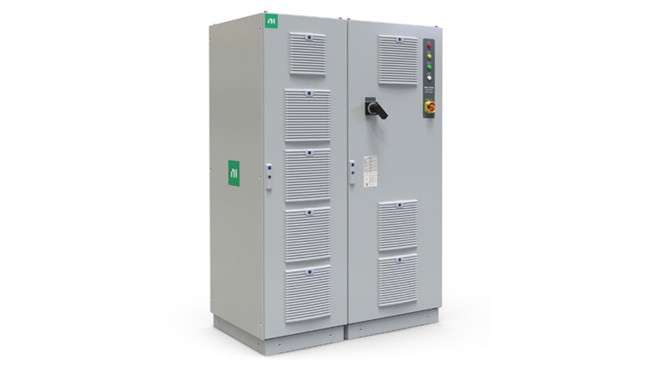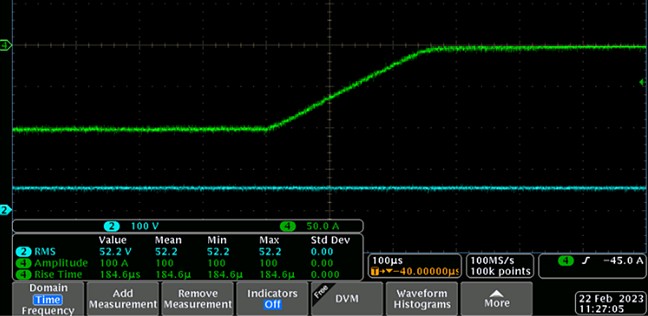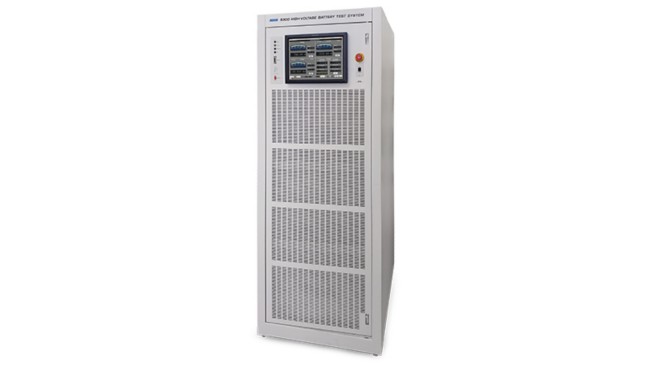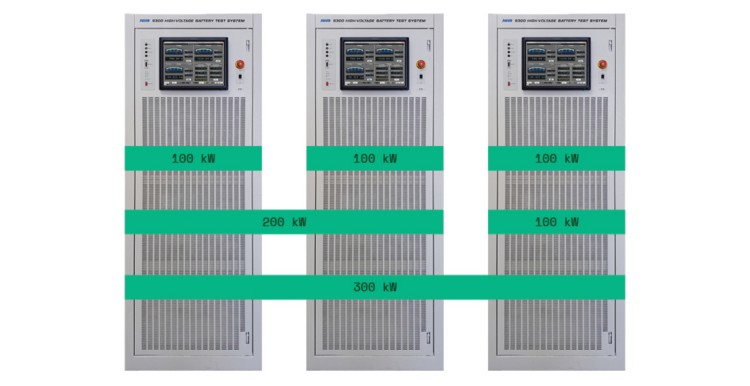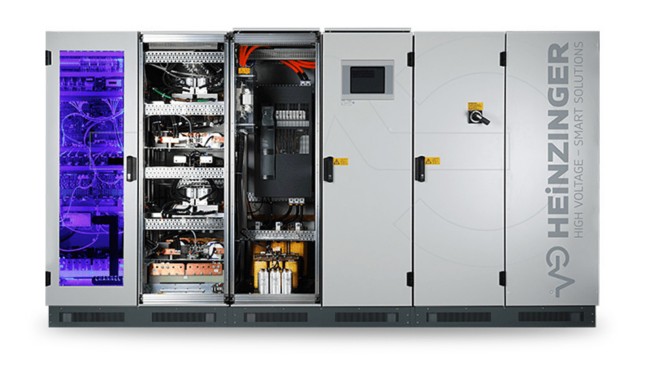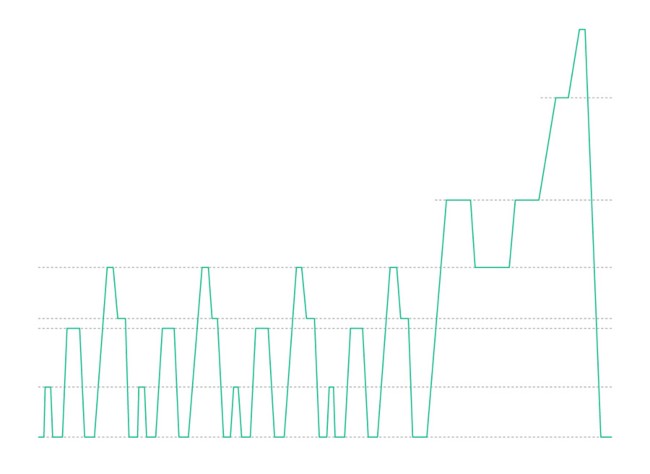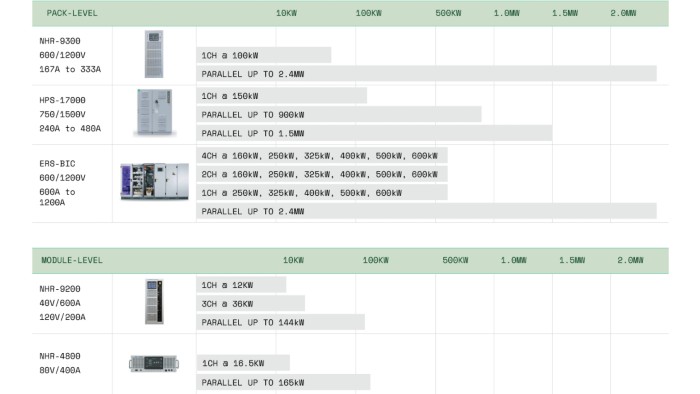How to Select a Battery Cycler for Testing EV Modules and Packs
Overview
Part of our H2 2023 Automotive Journal
The EV battery market is moving towards increasing production volumes to reduce overall cost, while doing this rapidly without compromising safety or quality. When it comes to testing batteries, there’s a wide range of challenges from temperature dependencies to safety issues and time-to-market pressures. A software-connected test strategy is key for battery testing, but also requires flexible test equipment that can be synchronized, orchestrated, and operated effectively.
Battery cyclers help verify the EV battery performs as expected, can reveal charging, capacity, efficiency, or safety issues, speed time-to-market, reduce costs, and accelerate the pace of battery research and development.
So, what battery cycler do I choose to test better, faster, and safer?
Each battery lab has varying test objectives, parameters, and environments for various battery packs. Whether requiring just an individual test channel or an entire battery lab solution, it’s important to start with understanding what goals need to be achieved before selecting the right solution.
Contents
- Examples of Industry Battery Lab Test Requirements
- NI Module- and Pack-Level Test Solutions
- Consult Our Battery Test Experts
- Next Steps
Examples of Industry Battery Lab Test Requirements
NI has a portfolio of high-performance EV battery cycler options to cover a wide range of capabilities that address specific test requirements across the battery life cycle from R&D, validation, to production, end of life, and remanufacturing. Let’s evaluate a few real-world use cases and share why a solution was selected.
1. Reproducing Real World Signals from Record and Play
Battery Lab A is a large, advanced battery R&D validation lab evaluating new high-power battery architectures up to 1500 V. The goal of the lab is to emulate real-world measured conditions to investigate battery performance, dynamics, and the impact of life loads and battery life.
The customer wanted to measure and record dynamic profiles and recreate a specific system dynamic at frequencies of 10 kHz. Ideally, the solution needs to provide cycling capability with a frequency of at least 20 kHz to accurately reproduce those signals—including ripple emulation and battery characterization.
Figure 1: HPS-17000 Battery Cycler
The HPS-17000 was selected because it can test up to 1500 V products while allowing for high-frequency test signal production. Its high-performance capability allows running high-frequency, high-fidelity waveforms at high resolution in microseconds. The unit can inject higher frequency signals to observe how the battery reacts, record and measure its signal, and replay it on the battery. The HPS-17000 high-voltage battery cycler is ideal for testing HIL applications using time-stamped setpoint and measurement streaming over Ethernet at rates up to 100 kHz, which far surpasses the required frequency of 10 kHz.
Figure 2: HPS-17000 provides high-frequency test signal production step response from 0 to 100A in .25ms
Figure 2 shows a scope measurement of a rate-controlled step response from 0 to 100 A with the step completed in 0.25 milliseconds. This illustrates the capability of the HPS-17000 to inject signals with high-frequency content in a controlled manner.
2. Testing Multiple Battery Dimensions Simultaneously
Battery Lab B is a large battery R&D validation lab that requires testing battery packs with multiple dimensions that range widely in voltage and power. The packs are in different areas and labs within the facility as well as remote facilities. This requires reconfiguring the cyclers to increase and decrease the power levels in just a matter of days. The types of testing span far and wide including lifecycle testing to peak performance, operational efficiencies, safe system validation, thermal cycling performance, product endurance, and refining the BMS for end application.
Figure 3: NHR-9300 Battery Cycler
The NHR-9300 regenerative battery pack test system was selected for its easy and flexible reconfiguration, setup, and mobility. Its modular power blocks of 100 kW can be scaled up to 2.4 MW and downsized as needed to optimize setup and scheduling to test multiple systems inside a battery pack. The engineers are constantly reconfiguring their overall size and application from 100 kW, 500 kW, and 2 MW. A few of the cyclers are sometimes separated and shipped to another department where capital assets such as temperature chambers are located.
Figure 4: NHR-9300 provides modular and scalable power in 100kW building blocks for easy reconfiguration
This battery cycler is mobile-friendly with a higher power density, enabling the cabinets to move around easily on wheels and allowing the customer to scale power as needed.
The multiple control options, including the large visualization panel for charting and scope displays, provide the operator with an easy, user-friendly way to get up and running with out-of-the-box capability for simple tests and programming capability for more sophisticated tests.
3. Running Battery Tests Under High NEMA-Rated Conditions
Battery Lab C is a validation lab testing battery packs in which the battery undergoes harsh physical and environmental conditions to test the lifecycle of an EV battery with typical load profiles and charging cycles, as well as excessive amounts of power overload.
Figure 5: ERS-BIC
What’s the best solution for this scenario? The lab is set up with temperature and environmental condition chambers controlled by one or more ERS-BIC systems. These systems can be clustered efficiently to deliver higher voltage, current, and power ratings with easy master and slave control. The ERS-BIC has a unique capability to manage excessive amounts of power overload in case there is a spike in power that goes way above the nominal. This is useful when the test stand is planned for nominal power requirements, but there are use cases where substantially more power is required for a short period of time. In this case, the nominal power is used during recovery time.
Figure 6: ERS-BIC provides overload capability and fast recovery up to 180% of power for 30 seconds
The ERS-BIC unit has a water-cooled design which allows it to handle overcurrent and overpower pulses or high current power pulses without requiring an equivalent amount of cooldown time. This is unique in the industry and allows you to do more testing in a smaller footprint. Its water-cooled design also makes it possible to reach higher levels of IP or NEMA ratings for dirty, dusty, or contaminated environments if needed with IP ratings up to IP54.
NI Module- and Pack-Level Test Solutions
While all battery labs are unique, NI offers a wide variety of high-performance battery cyclers to meet your application requirements. Refer to the figure below for a comparison of how some of our systems map to requirements for module- and pack-level test.
Figure 7: NI's Battery Cycler and Battery Emulator Portfolio
Additional NI battery test equipment and software is found in modern labs. Our Battery Test System (BTS) software provides out-of-the-box functionality through plugins, device drivers, and specialized analysis/test IP and can manage a fleet of battery test systems and their data. Dashboards can be customized to simplify data analysis.
Consult Our Battery Test Experts
In conclusion, choosing the right battery cycler for testing EV modules and packs is crucial for ensuring the reliability, performance, and safety of electric vehicle batteries. Key considerations include understanding the specific test objectives, parameters, and environments of your battery lab, as well as the flexibility and scalability required to adapt to evolving testing needs.
NI offers a comprehensive portfolio of high-performance battery cyclers designed to address a wide range of test requirements across the battery life cycle. From R&D and validation to production and end-of-life testing, our solutions provide the flexibility, accuracy, and reliability needed to accelerate battery research and development while reducing costs and time-to-market.
By consulting with our battery test experts and evaluating real-world use cases, you can confidently select the optimal battery cycler solution tailored to your unique testing needs. Contact us to learn more about NI's battery cycler options for EV battery module and pack test.
